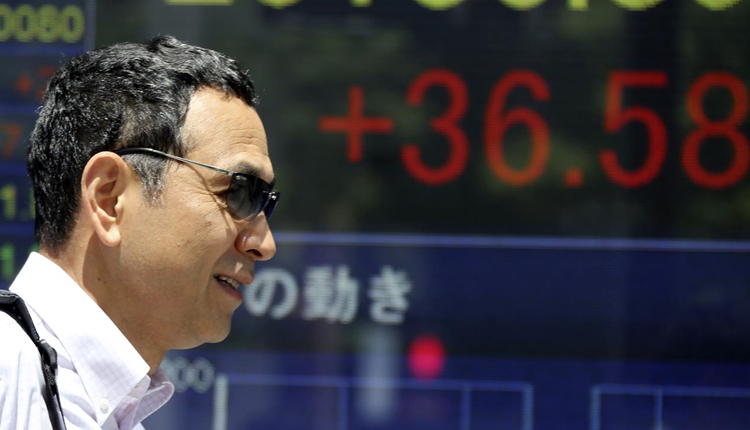Asia markets were mostly higher on Friday as developments on the U.S.-China trade front overcame fears of a slowdown in the global economy which resulted in sharp declines in stocks stateside overnight.
The Chinese mainland markets rebounded strongly after an earlier slip. The Shanghai composite bounced about 2.05 percent higher to close at around 2,514.87 and the Shenzhen composite jumped 2.658 percent to finish its trading day at approximately 1,279.49. The Shenzhen component rose 2.756 percent to close at about 7,284.84.
Hong Kong’s Hang Seng index extended gains to rise about 2 percent, as of its final hour of trade.
The positive moves in China came after the country’s commerce ministry announced that vice ministerial level trade talks with the U.S. would be held on January 7-8.
The development on the trade front was also bolstered by positive data from China’s services sector. The Caixin/Markit services purchasing managers’ index jumped to a six-month high of 53.9 in December, rising from 53.8 in the previous month. The figure was significantly higher than the 50.0 mark which separates expansion from contraction.
The data came days after China reported a decline in its factory activity for December.
South Korea’s Kospi also recovered from its earlier losses to close 0.83 percent higher at 2,010.25.
Japan’s Nikkei 225, however, dropped 2.26 percent to close at 19,561.96 while the Topix index fell 1.53 percent to finish the trading day at 1,471.16, with most sectors seeing declines.
Shares of Japanese conglomerate Softbank fell 2.89 percent and Fast Retailing, the company behind the Uniqlo chain of apparel stores, dropped 5.45 percent. Stocks in Japan were closed on Wednesday and Thursday for holidays.
Australia stocks fell as the benchmark ASX 200 slipped 0.25 percent to close at 5,619.4.
The heavily-weighted financial subindex declined 0.34 percent as shares of the country’s so-called Big Four banks were mixed; Australia and New Zealand Banking Group slipped 0.37 percent and Westpac saw losses of 0.04 percent. National Australia Bank, on the other hand, recovered from earlier losses to rise 0.21 percent while Commonwealth Bank of Australia was slightly higher.
“For the brave, now would be a good time to be looking at … some of these markets,” Stefan Hofer, a managing director and chief investment strategist at LGT Bank Asia, told CNBC’s “Squawk Box” on Friday. Hofer added that liquidity and trading volumes are “still quite thin at the outset of the year.”
“Fundamentally speaking, I think if we do have a trade deal with China, let’s say, by the middle of 2019, then Asia … will be the place to be in terms of equities,” he said, adding that the ongoing U.S.-China trade war has been “the major overhang that has been a problem” for Asian markets.
Wall Street tumbles
In market action overnight on Wall Street, stocks sold off amid fears of a slowing global economy and weaker-than-expected reading on U.S. manufacturing.
The Dow Jones Industrial Average plunged 660.02 points, or 2.8 percent, to close at 22,686.22. At its session low, the Dow fell more than 700 points. The S&P 500 shed 2.47 percent to finish at 2,447.89 while the Nasdaq Composite dropped 3 percent to close at 6,463.50.
The market sell-off was led by Apple, which saw its stock plunge almost 10 percent after cutting its revenue guidance on Wednesday —its worst session since 2013. The iPhone maker attributed most of the predicted revenue shortfall for struggling business in China.
The decline in stocks stateside was accelerated by a weaker-than-expected reading on U.S. manufacturing sector. ISM’s manufacturing index fell to 54.1 in December, economists polled by Refinitiv expected 57.9.
The disappointing economic data from the world’s two largest economies come at a time when officials from the U.S. and China are attempting to strike a deal on trade, after placing a series of punitive tariffs on each other’s goods.
Currencies
The U.S. dollar index, which tracks the greenback against a basket of its peers, was at 96.303 after seeing a high above 96.8 earlier in the week.
The Japanese yen, widely viewed as a safe-haven currency, traded at 107.99 against the dollar after rising sharply on Thursday to levels below 106. The Australian dollar was at $0.7024 after seeing an earlier low of $0.6991.
Source: CNBC



